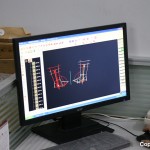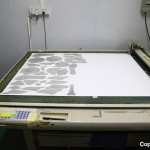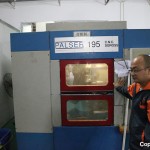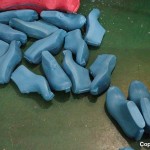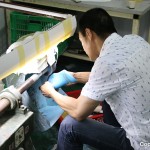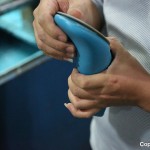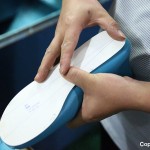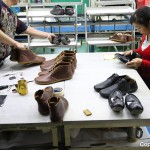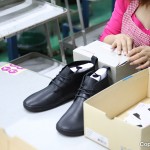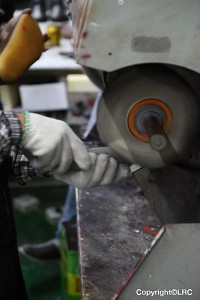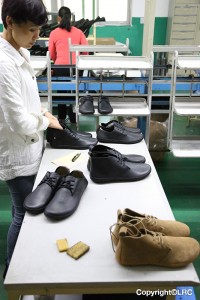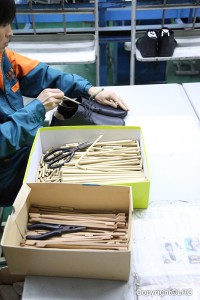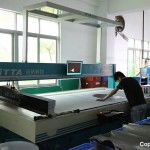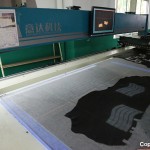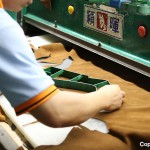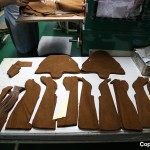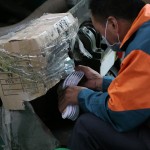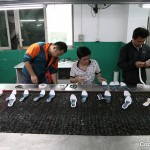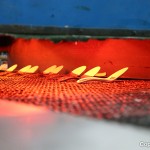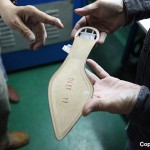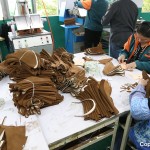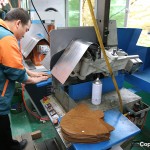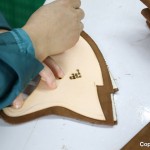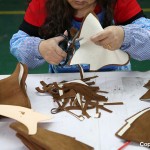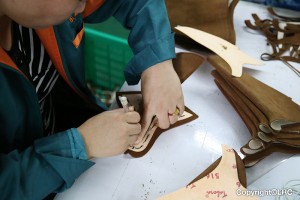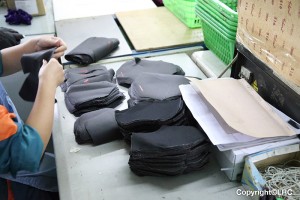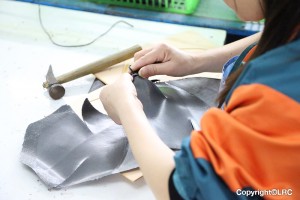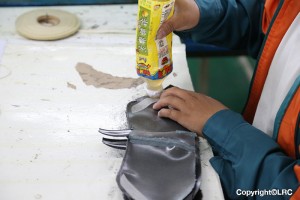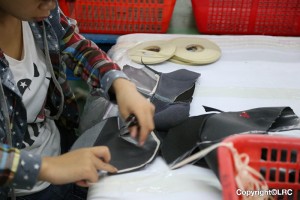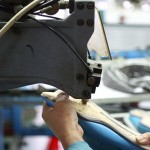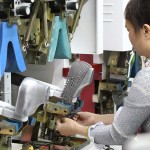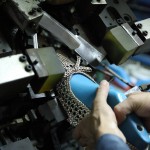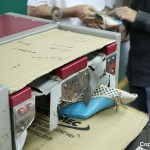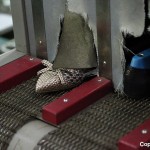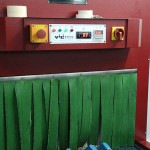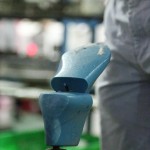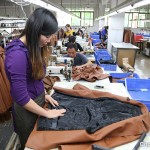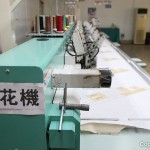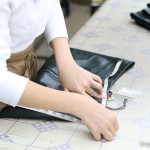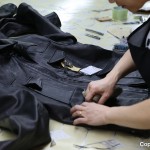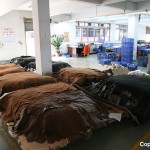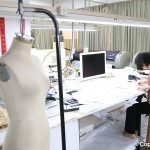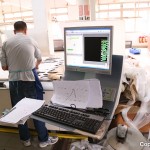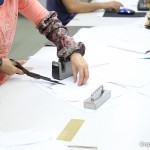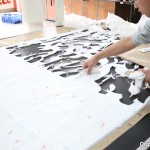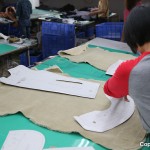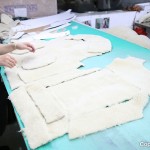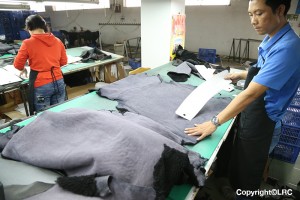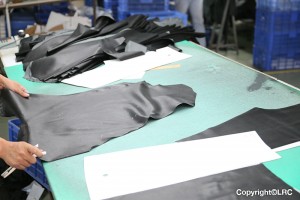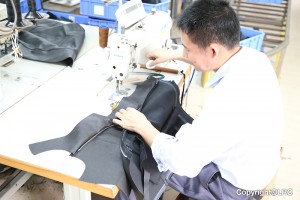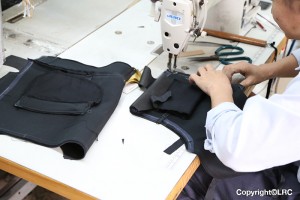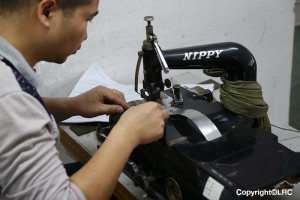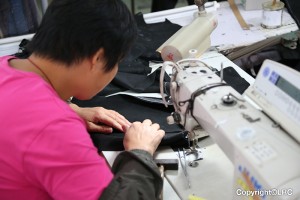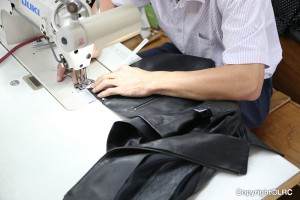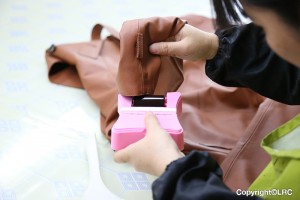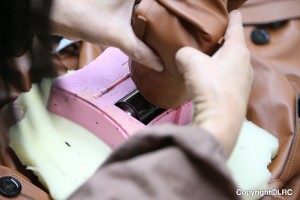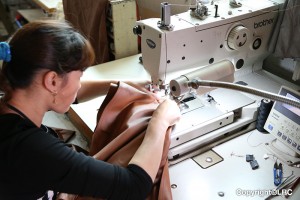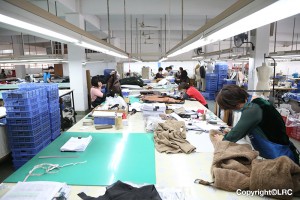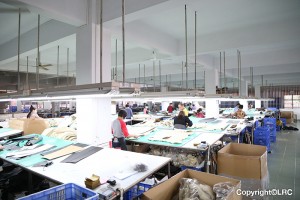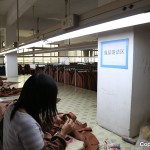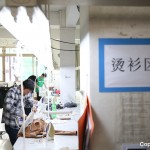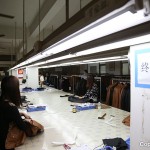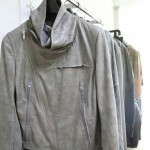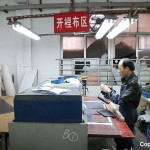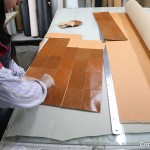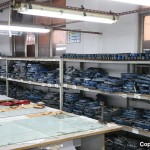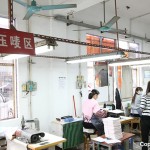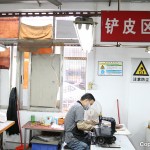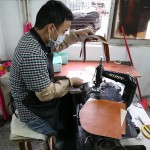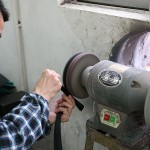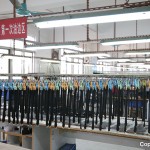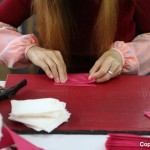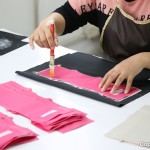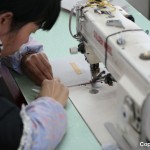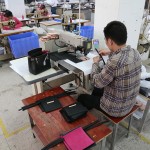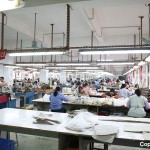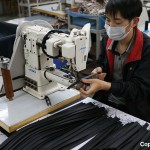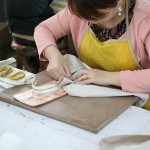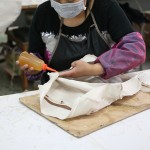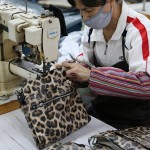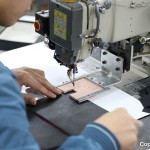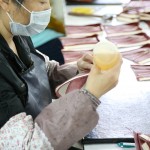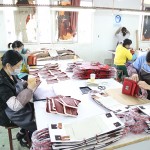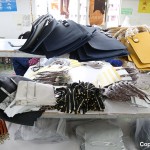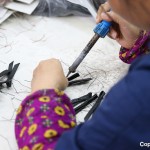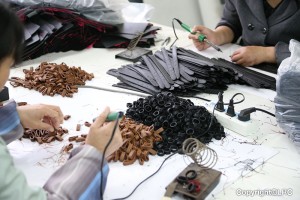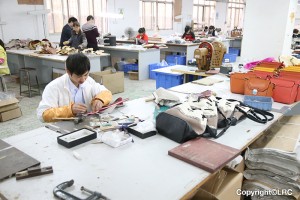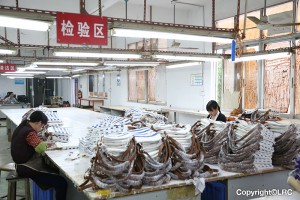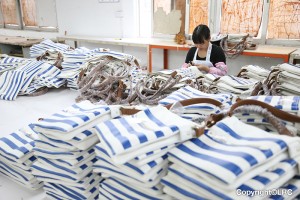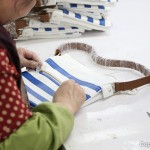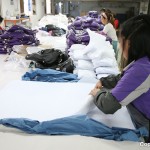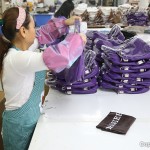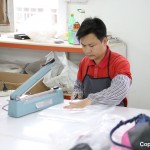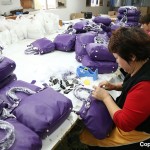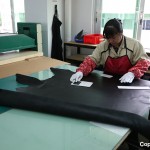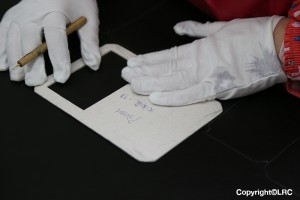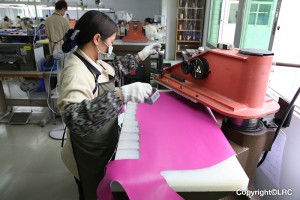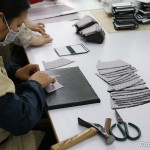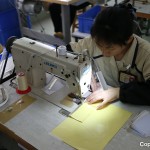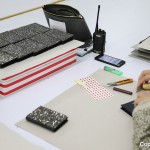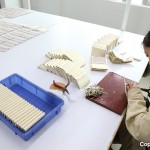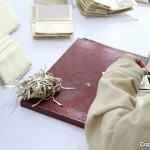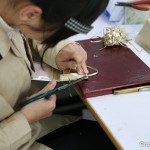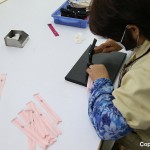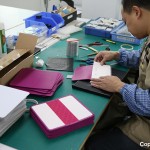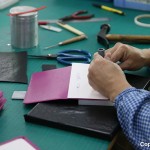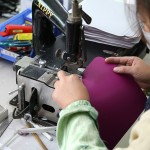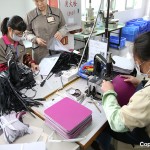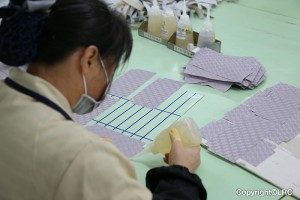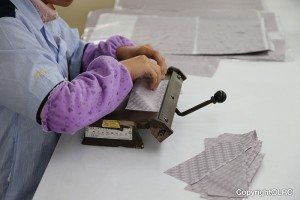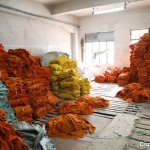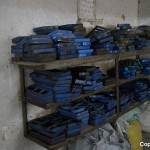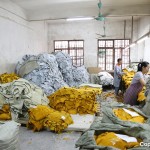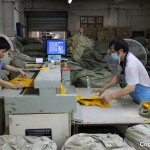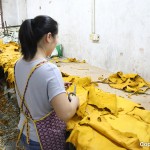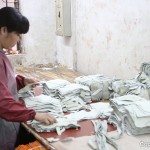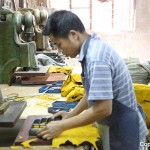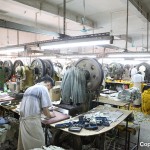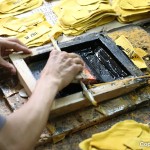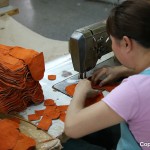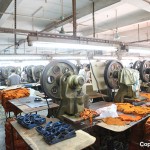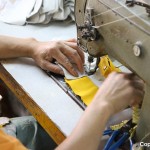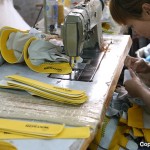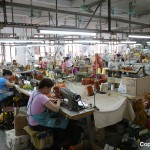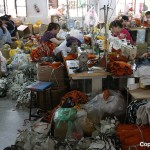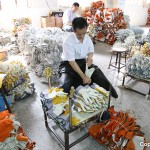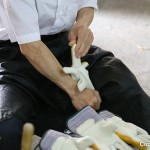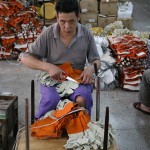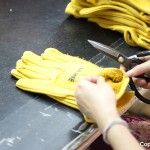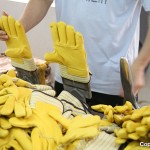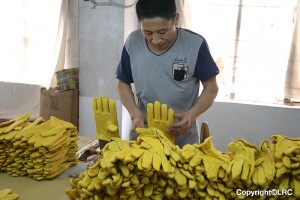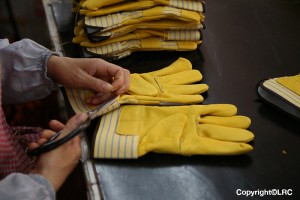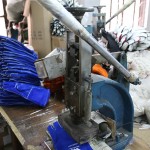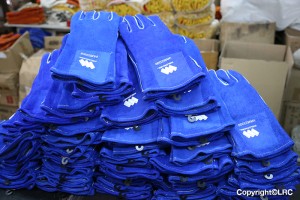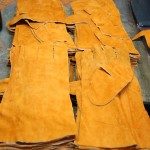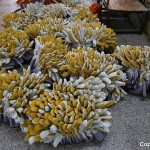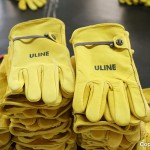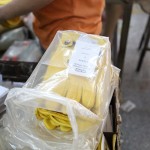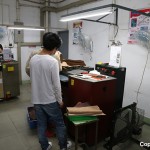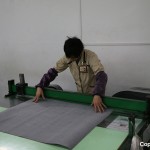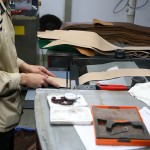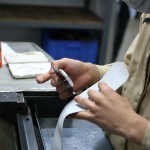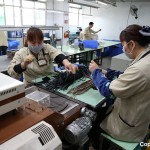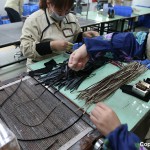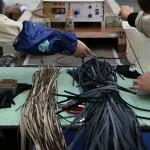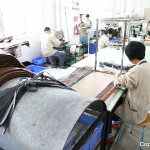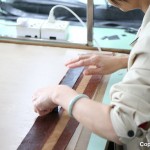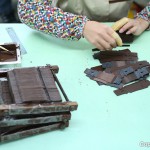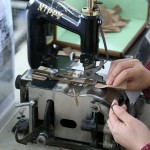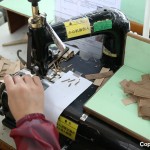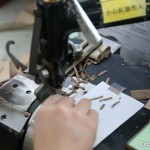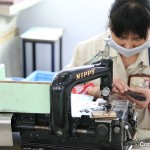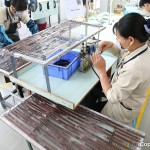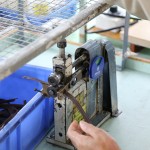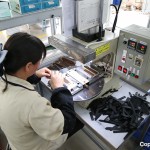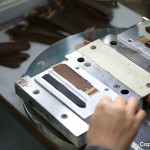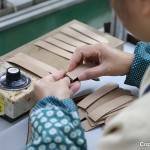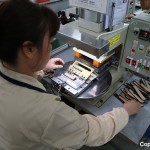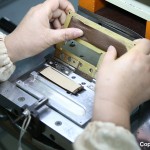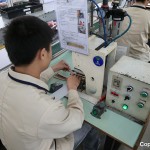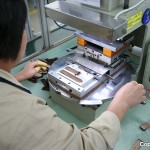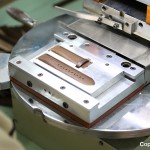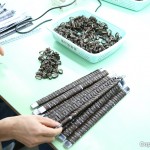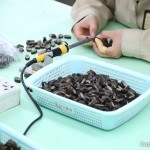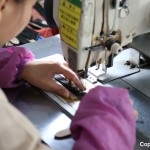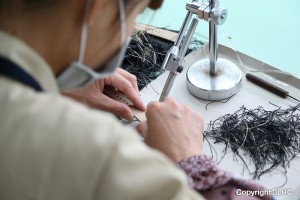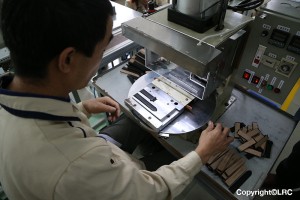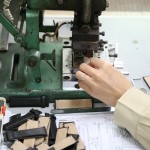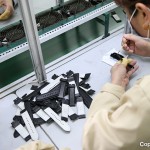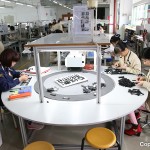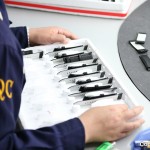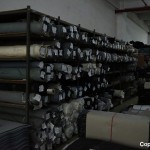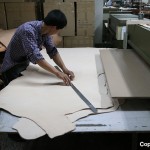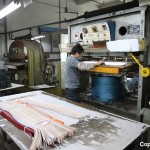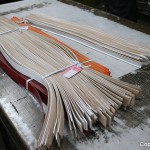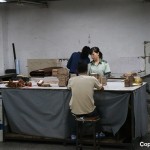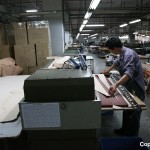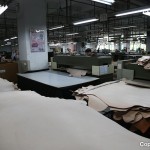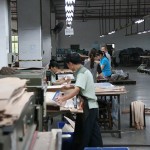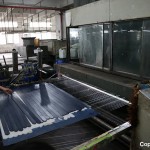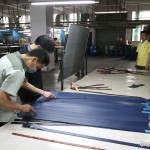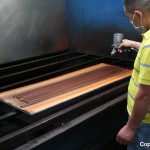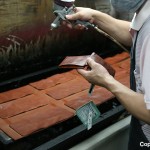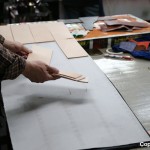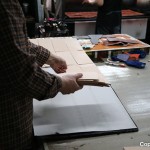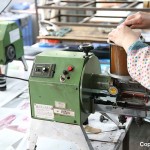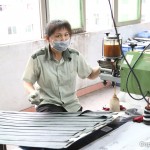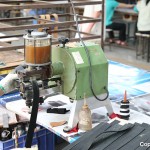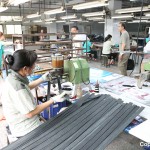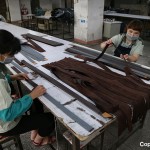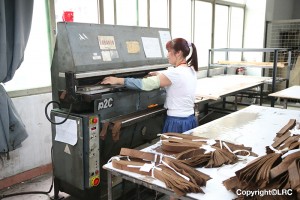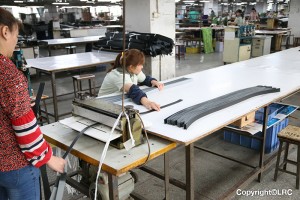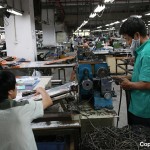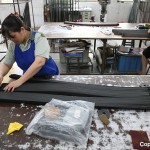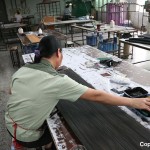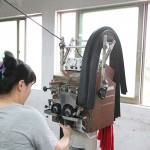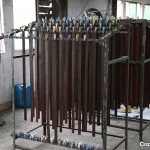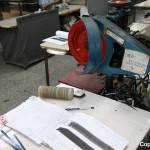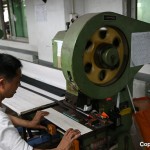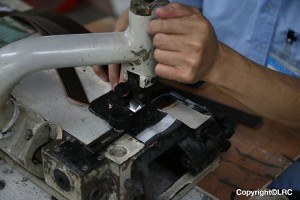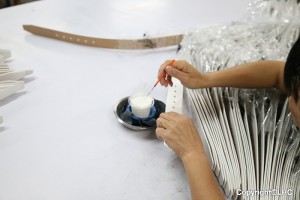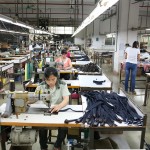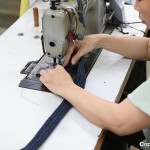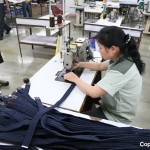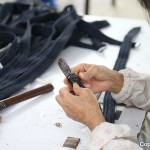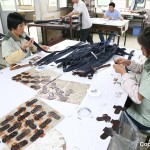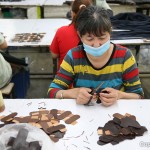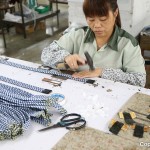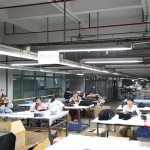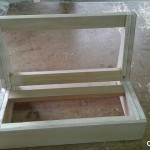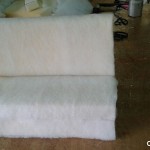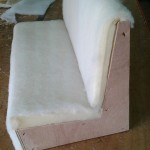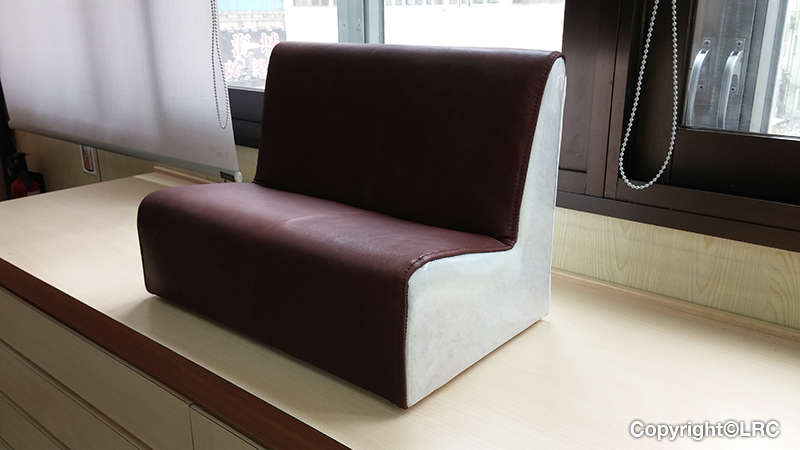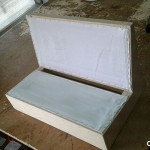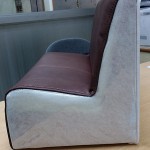Footwears
Footwear is the biggest consumption on leather among all leather articles. Footwear classifies itself according to fashion, function and user. Material used various from cow, sheep, goat, pig, horse, and other exotic animals. Different parts of shoes require different quality of leather, softness, thickness, touch, and physical properties may be different. However, generally, rub fastness, flex resistance, abrasion resistance, flexibility, tear strength, grain break resistance, steam and air permeability are required. Some people even ask for water and oil resistance.
Part of shoe:
● shoe upper
● tongue
● welt
● eyelet
● vamp
● counter
● quarter
● sole
● insole
● filber
● shank
● lining
● heal
Production:
● design
● paper pattern
● piece cutting
● skiving
● binding or sewing of upper part
● lasting
● heat setting
● roughing cement
● applying insole
● attaching out sole
● attaching
● press
● heel attaching
● cleaning and regulating
● polishing
● quality control
● packing
Damages in shoes
● stains
● grain cracks
● grain loose
● finishing pill off
● mattening
● colour worn out.
Every time after wearing, shoes should be brushed, rubbed, cleaned, waxed, dry, and put into shoe box. Slight damage can be covered with shoe creams, shoe wax, brush and polish. More serious damage should refer to professional repairing.
Garment
Use leather or fur for clothing is historical and traditional. It helps to protect, keep warm and beautify people.
Material required usually light, soft, thin and good surface fastness. Some even require to be washable.
Cow, sheep, goat, pig, deer skin are chosen.
Production:
● design
● paper pattern
● material selection
● cutting
● binding by sewing
● put in lining
● form fixing
● put on spare parts and accessories
● ironing
● quality control
● packing
Light brush or rub by cloth
Well dry before storage, Every time clean and dry after wearing
Storage in dry condition
Need professional cleaning in laundry if necessary.
Leather goods
Leather goods can be suit cases, travelling bags, fashionable bags, office bags, shopping bags, wallets and so on.
The design is very flexible and has numerous possibilities.
It can be practical and long lasting. It can also be fancy and fashionable.
The material can be hard and tight or soft and light.
It can be made of all kinds of animal leather with various colours and designs.
General requirements should be good fastness to light and rubbing, good tear and flex resistance, better shower proof.
There are common combinations with other materials like PU, plastic, Fibre, textile, rattan, straw and even wood.
Production:
● design
● paper pattern
● material selection
● cutting
● binding
● edge fixing and colouring
● set up accessories
● quality control
● packing
Hand bag should be well cleaned and dried every time after used and before storage.
Stains, worn-out or colour fading can be repaired by redyeing, adhesive or resin refilled.
Cracks, breaks or worn out of metallic accessories should call on professional technicians.
Gloves
Glove is a historical wearing of human beings. There are many functions like to keep warm, to protect hands, for social life decoration, for working, driving, sport activities and so on.
The design and material of gloves can be very specialized nowadays.
In the field of leather, cow, pig, goat, sheep, rabbit and deer can all be used.
Leather with good tensile property, good dyeing fastness and tear strength. Some glove leather even requires being washable, oil and water proof, heat retardation.
Production of gloves:
● mould fixation
● material selection
● cutting pieces
● sewing
● put in lining
● check and cut elastic threads
● form fixing
● quality control
● packing
Gloves should be stored individually, clean and dry after use. Nowadays, some gloves are even washable.
Watch belts
To fix the watch to wrist. Other than practical uses, also decorative.
Watch belts made with leather are light, comfortable, fit for use and can be of various patterns.
Commonly, made with leather like cow, goat, pig or currently exotic animal skins like crocodile, lizard, bird’s leg skin and snake.
Because of its tiny area, it is not necessary to use big pieces of leather. General physical properties and mainly emphasized in less tensile nature, good dry and wet rub fastness, good fastness to water and sweat.
Since watch belts attach to human skin for a period of time, safety chemicals used in leather process is essential. Some people even ask for metal free tanning.
Accessory parts are mainly metal.
Manufacturing:
● design
● paper pattern
● mould making
● material selection
● pieces cutting and form fixing
● binding with adhesive or by sewing
● punch holes
● edge refining and colouring
● setting spare parts
● quality control
● packing
Some pollution on surface of watch belt like grease and sweat stain can be removed by slightly rubbed with cloth, wetted with water, detergent or diluted vinegar.
Belt
Purpose can be for formal dressing, casual wear or match fashionable dresses.
Colour, design and material quality can be varied freely according to purpose.
Cow, buffalo and horse leather are commonly used. Exotic animal skins like snake and crocodile skin are also used.
Vegetable tanning on butt part is commonly selected.
Less tensile property and better flex, abrasive and rub strength are necessary. Should pay attention to the section of adhesives between leather and metals.
Manufactory:
● design
● paper pattern
● mould making
● material selection
● pieces cutting and form fixing
● binding with adhesive or by sewing
● punch holes
● edge refining and colouring
● setting spare parts
● quality control
● packing
The damage of belts is mainly due to mechanical flexing and pulling. This causes grain breaking or loose grain. This kind of damage already goes deep to texture, which is difficult to be repaired. Only if some damage in the metallic spare parts which can always be replaced easily.
Upholstery
Using leather for interior decoration and upholstery is very common nowadays. Wall cusion, floor tiles, bar table, sofa and so on.
Mainly using cow, buffalo, yak and horse leather. Requiring tight & firm fibre structure, large area without holes and cuts, good coating fastness.
Work procedure:
● design
● material selection
● cutting
● wooden flame constructing
● put in lining and filling stuffs
● put on top cover
● pull
● stitch or nail
● quality control
● cleaning
Sofa is easily polluted by dust, grease, food, finger prints, sun light & mechanical attack. Resulted at color stain, oil stain, molding, colour stripping or immigrating, breaks or scratches.
Solution: light stain or make cleaned by water with detergent, dry rub and air dry.
Apply protection wax afterwards.
Need professional repair if mechanically or heavily damaged.

 中文
中文

